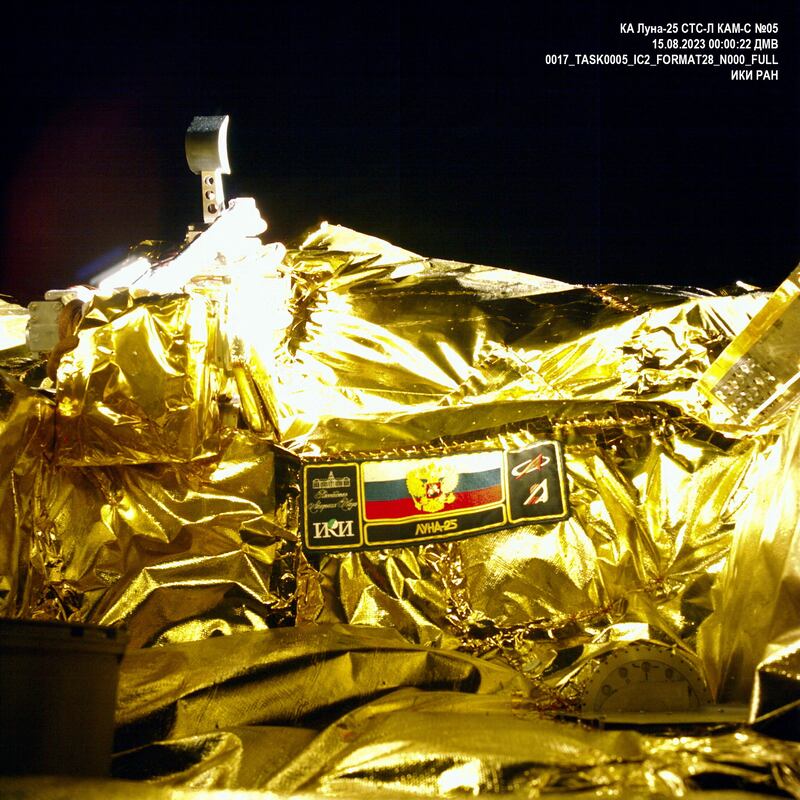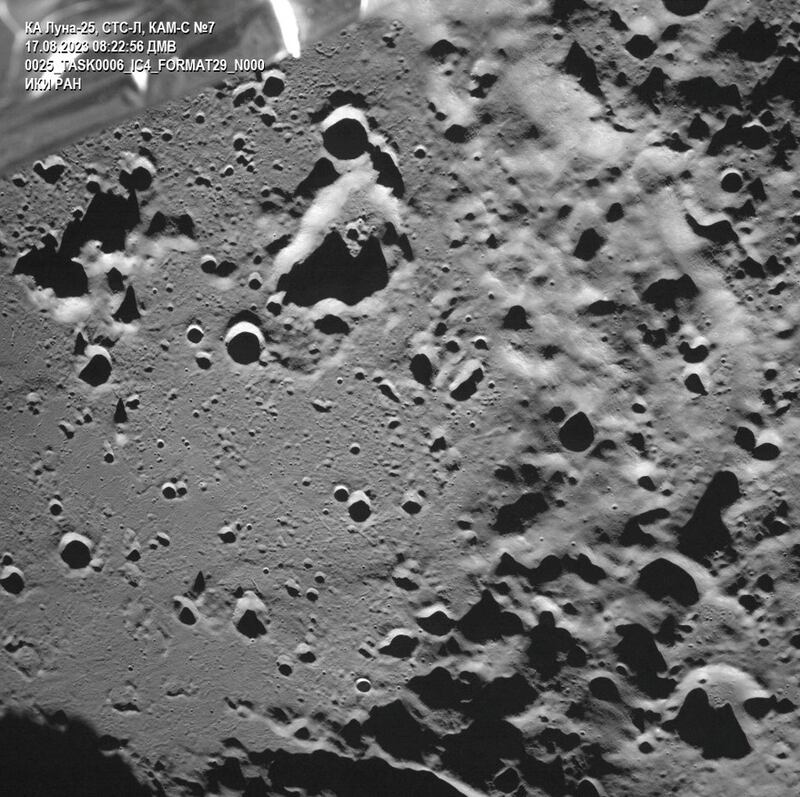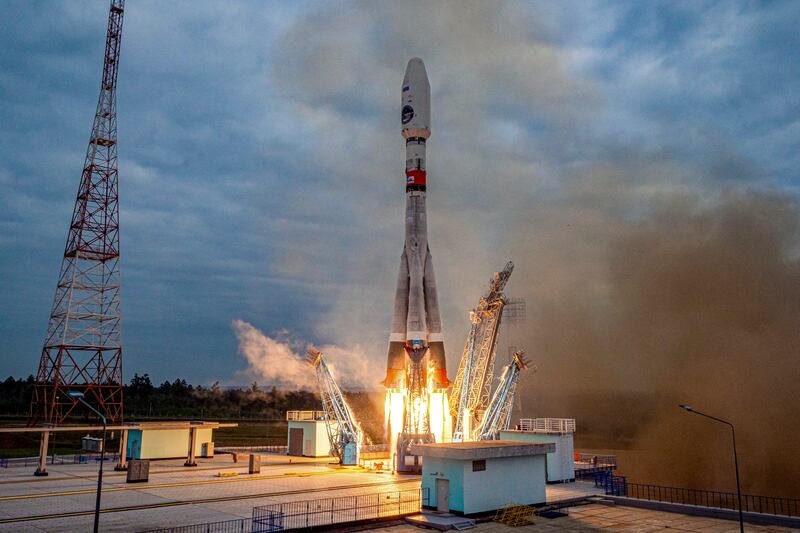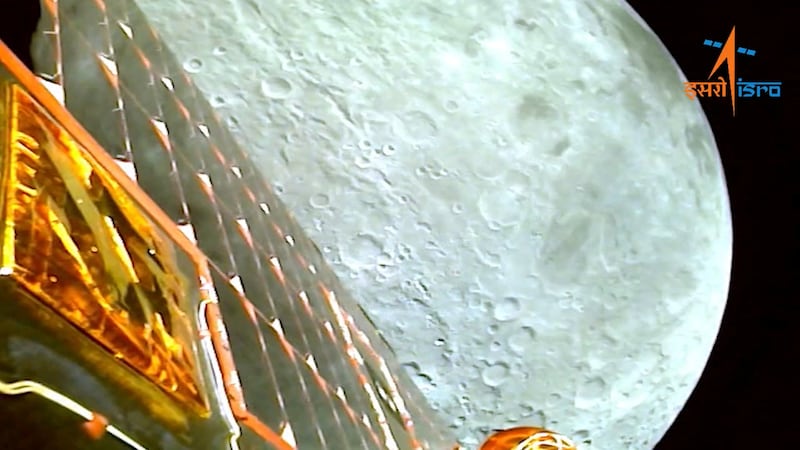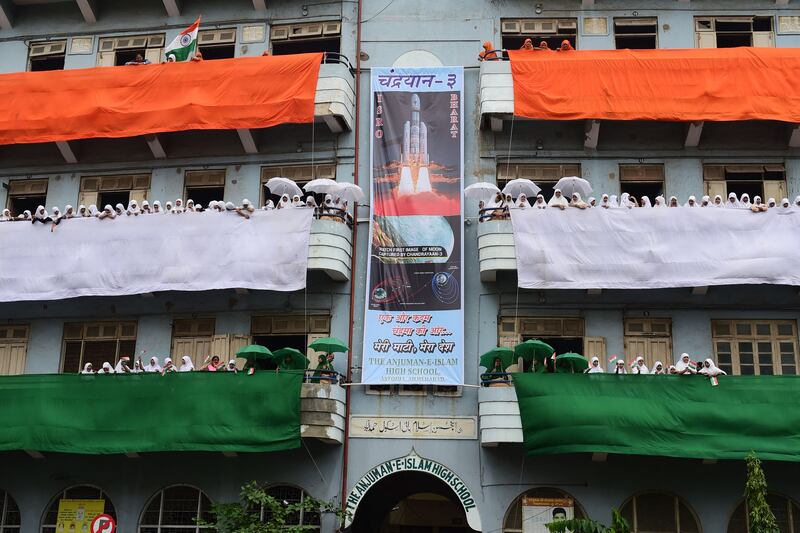Russia’s first Moon mission in 50 years has failed, after its Luna-25 craft crashed on the lunar surface.
The Luna-25 lander had successfully entered lunar orbit last week, but mission control lost contact with it after a crucial maneouver on August 19 did not go as planned.
Russian space agency Roscosmos confirmed in a statement posted on Telegram on Sunday that the landing module had crashed on the surface.
"According to the results of the preliminary analysis, due to the deviation of the actual parameters of the trajectory from the calculated ones, the device switched to an off-design orbit and ceased to exist as a result of a collision with the lunar surface," the space agency said.
India prepares for a lunar landing
India's Chandrayaan-3 Moon mission, however, is going as planned so far, with the Vikram lander expected to attempt a soft touchdown on August 23, at 4.34pm, UAE time.
“The lander module is in 113km x 157km orbit around the Moon,” the Indian Space Research Organisation said in a statement on Saturday.
“The second de-boosting is planned for August 20, 2023.”
India launches mission to land spacecraft on Moon's south pole

This is the country's second attempt to land softly on the Moon's surface, after its Chandrayaan-2 mission crash-landed in 2019 because of a software issue.
Both the Russian and Indian missions were targeting the lunar south pole, which has never been explored.
Space agencies are likely to be interested in the region because it has ice, which has been deposited by meteorites over several billion years.
The ice could also help with human habitation and be used to produce rocket fuel for missions to Mars and beyond.
The US and China are also planning missions to the lunar south pole.
Moon landing is no easy task
Only the US, the Soviet Union and China have ever achieved a soft lunar landing.
It is a challenging task that has less than a 50 per cent success rate.
Because the Moon does not have an atmosphere, landers cannot be slowed down during a touchdown using parachutes like on Earth and Mars.
Instead, they need to have a propulsion system that helps brake and position the lander module correctly, so it can touch down gently.
But challenges can still arise due to the unstable terrain on the Moon's surface, including craters and rocks, as well as any possible technical issues.
Israel attempted a landing in 2019 that failed because of a technical glitch.
ispace, a Japanese company, had hoped its Hakuto-R lander, which was carrying the UAE's Rashid rover, would touch down softly earlier this year, but it also failed because of a software issue.
China is planning to build a research station on the Moon in the coming years, while the US hopes to build the Lunar Gateway – a small Moon-orbiting station that astronauts would live in before descending to the surface.
